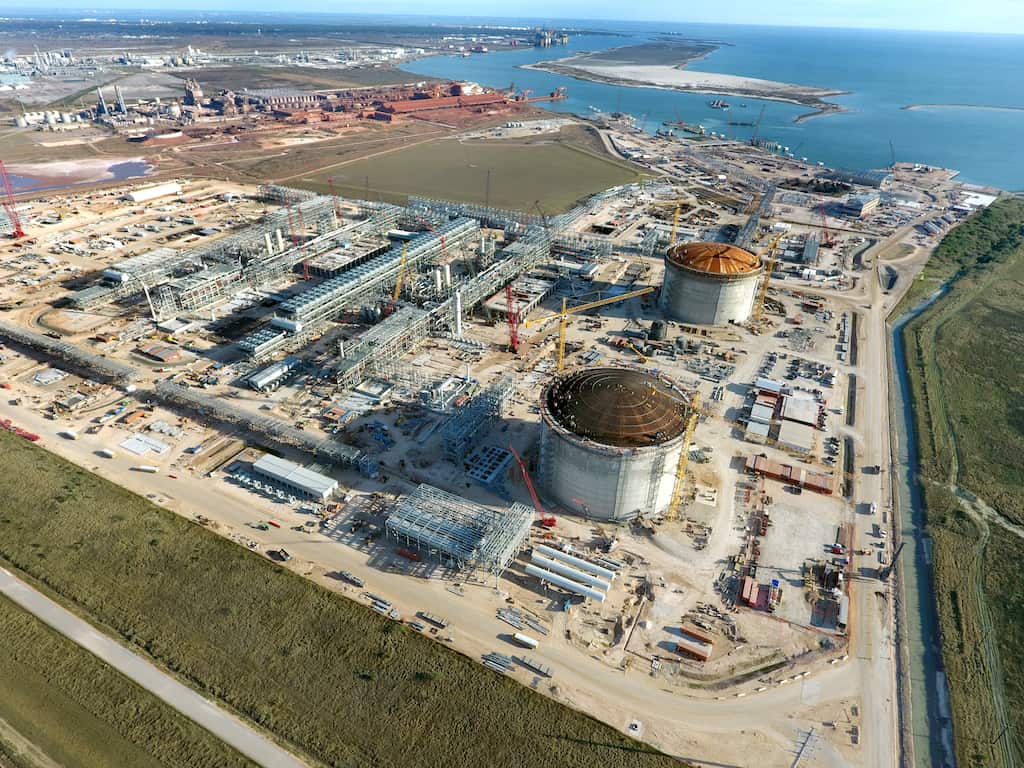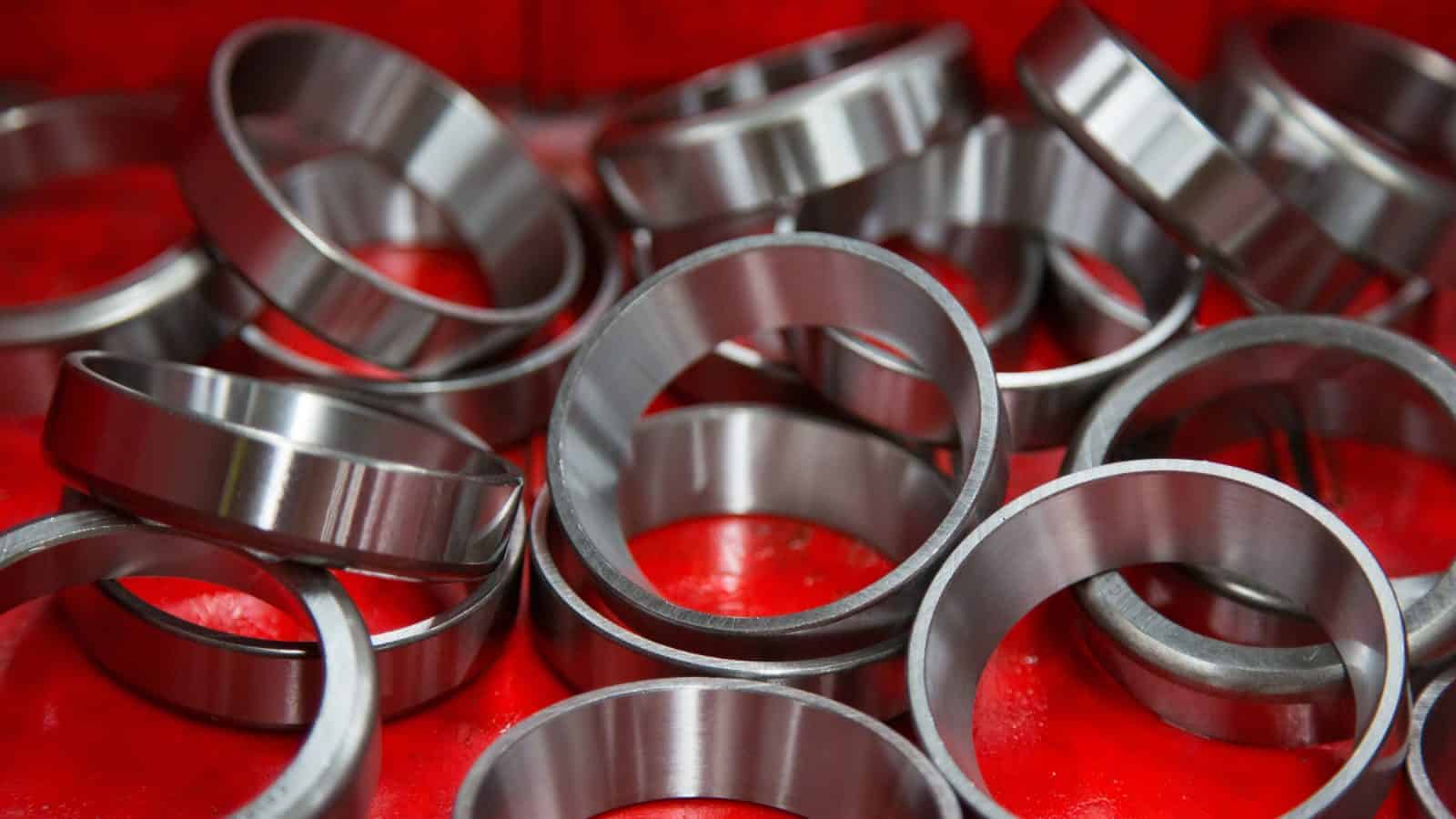Liquified Natural Gas Boom Impacts U.S. Manufacturers
U.S. Natural Gas Production Continues To Break Records

Last month, the European Union announced that U.S. exports of liquified natural gas (LNG) to Europe had increased nearly 300% since 2016. This news came on the heels of a series of executive orders from President Trump designed to speed up energy infrastructure projects that enable manufacturers to carry natural gas to market.
Rachel Jones, the National Association of Manufacturers’ senior director of energy and resources policy, helps us break down what it all means.
Why is the U.S. experiencing a natural gas boom?
North America has more shale gas than any other place in the world. Technology is the other huge driver. The combination of horizontal drilling and hydraulic fracturing technologies is unlocking vast natural gas resources and changing the face of modern manufacturing in America.
This boom is set to keep growing. According to the Energy Information Administration, U.S. shale gas production is projected to more than double again over the next 25 years.
What is “liquified” natural gas (LNG)?
It’s really just natural gas that has been refrigerated until it turns into a liquid. When it comes out of the ground, natural gas is actually very thin and light. To make it easier to move around the world, it is turned into a liquid.
Why are investments in LNG export infrastructure so important for the U.S. manufacturing industry?
LNG terminals are massive infrastructure projects that create tens of thousands of jobs.
Golden Pass is a $10 billion investment in the Gulf Coast that will create jobs across the country for manufacturers who make compressors, heat exchangers, storage tanks, pipes, valves and other components of these state-of-the-art infrastructure projects. Golden Pass alone is projected to create 45,000 direct and indirect jobs during construction, plus several thousand more during operation. Cheniere’s Sabine Pass and Corpus Christi projects together represent an investment of approximately $30 billion in U.S. energy infrastructure. And the Driftwood project is poised to invest another $30 billion, creating nearly 50,000 direct and indirect jobs in at least 18 states.
How do President Trump’s recent executive orders promote LNG infrastructure development?
Manufacturers in the United States are ahead of their global competitors in the race to build the infrastructure needed to export LNG; however, an unnecessarily protracted regulatory process could cause a major disadvantage for these exporters.
In a big win for U.S. manufacturing workers, President Trump signed two long-anticipated executive orders intended to cut red tape and speed up the permitting process for energy infrastructure projects. These orders will promote badly-needed development of infrastructure to meet U.S. energy demand, create and support jobs for U.S. manufacturing workers, and provide reliable and affordable energy to U.S. consumers.
How does natural gas help manufacturers achieve sustainability goals?
Climate Change is one of the biggest global challenges we face. Manufacturers understand this and are taking real action to protect our environment; natural gas is part of that story.
Modern natural-gas plants that replace aging power plants can mean an 80% reduction in carbon emissions. Further, because solar and wind can produce varying amounts of energy, having natural gas available on demand actually enables us to further invest in renewable resources.
Future of Manufacturing Depends on Building Workforce

In many ways, manufacturing has never been doing better. Record numbers of manufacturers are optimistic about the future. Many are growing, investing, and hiring. Yet, this success is also fueling a growing crisis: too many manufacturing jobs and not enough workers to fill them.
Carolyn Lee, executive director of The Manufacturing Institute (MI)—the education and workforce partner of the National Association of Manufacturers—helps explain manufacturing’s “skills gap” workforce crisis and what the MI is doing to help solve it.
Carolyn, just how bad is the problem currently?
There are more than half a million open jobs in manufacturing right now, and based on a study by The Manufacturing Institute and Deloitte, 2.4 million jobs could go unfilled and about $2.5 trillion worth of GDP could be at risk over the next decade if we don’t get this under control soon. So this is a problem for manufacturing, yes, but it’s also a problem for the economy overall.
What’s driving it?
There are three main drivers. Some don’t know these jobs exist, some don’t have the right skills to land them, and some just don’t see the point. That last challenge—the perception challenge—is particularly tricky. Many envision manufacturing jobs the way their grandparents remember them. But that really isn’t how modern manufacturing careers look today.
Well, how do they look?
Modern manufacturing careers are increasingly high-tech, high-skill, and high-pay. The possibilities in manufacturing will become even more exciting as Manufacturing 4.0 technology continues to revolutionize the industry. Tomorrow’s manufacturing jobs will increasingly rely upon irreplaceable human skills—things like creativity, critical thinking, design, innovation, engineering and finance—and, by the way, many of these careers don’t require a four-year degree or the debt that can come with it.
What is the Institute doing to address this challenge?
We have a variety of programs designed to excite, educate and empower the manufacturing workforce of today and tomorrow, with a particular focus in four key areas: women, veterans, youth and lifelong learning. We are empowering women already in the industry and giving them tools to inspire and mentor others (STEP Women’s Initiative), we are connecting transitioning service members and veterans to great careers in manufacturing plus arming them with the exact skills and qualifications needed to excel (Heroes MAKE America), we are helping excite the next generation by encouraging companies and educational institutions across the country to open their doors to the reality of modern manufacturing careers (MFG Day), and we are engaged in a variety of initiatives to help current manufacturing workers access training for newer technology-intensive jobs—among many other programs and initiatives.
What can others do to help be a part of the change the MI is trying to enact?
One thing I’d recommend, and something the Institute is working to facilitate, is for people to educate themselves, their families, and their friends on what jobs in manufacturing truly look like. It’s an exciting time to be a manufacturer and there are lots of great opportunities in the industry, so come join us.
A News Source for Manufacturing

NAM Senior Vice President of Communications and Brand Strategy Erin Streeter discusses the NAM’s digital strategy and the shift to become a news source for the industry.
Why is the NAM diving into becoming more of a news source for the industry?
First, it’s a direct response to the needs of our members. We’re committed to ensuring that our members and allies have the tools they need to be nimble and effective advocates for our industry. We also want to be a platform for our members to tell their stories of success and achievement.
Second, in this disruptive environment, becoming America’s manufacturing news source isn’t really a choice. We saw this tidal wave of change hitting advocacy and communications coming, and we’ve been building a messaging, rapid response (“War Room”) and newsroom operation that has drawn the attention of some the most powerful leaders in our country and is watched by key business reporters and decisionmakers. We can’t let up now. If we don’t write our story and if we don’t present the facts, we are ceding control of our industry’s future to others.
Building “brand newsrooms” and operating like a media organization aren’t things trade associations have been known to do. Can you explain the rationale for a trade association like the NAM moving in these directions?
That’s right—but it is critical if we want to continue to position the NAM as a leader not only in the manufacturing industry, but also in Washington and across the country.
With today’s noisy, fragmented media environment, manufacturers need a resource they can trust and resource that can get their stories out to the public and key decision-makers. And lawmakers and the public need an authority on all things manufacturing.
What is new about NAM.org?
Everything. The whole concept is new. Take a look around. You’ll see various streams of relevant, timely news on a range of topics. You’ll see interviews with leading experts and CEO perspectives. This site is the next step in our mission to be a constant presence in people’s lives, using new technology, data and analytics to provide customized user experiences that interest, educate and drive action for the manufacturing sector.
With this new site, we are supercharging our ability to provide a best in class user experience across our social, email and mobile products.
In what ways can manufacturers leverage this site and NAM news platforms, such as the Input morning email newsletter?
They can tell their stories. This is their platform. Manufacturers across this country are transforming their communities, innovating great new products and giving people new opportunities for high paying jobs. We want to show the world the great things our industry is doing and how we’re keeping our promises to invest in our people and our communities.
There’s no organization that knows the industry better than the NAM, the one-stop shop for manufacturers. So we’re well-positioned to be a credible and compelling platform—and outlet—for stories about our members. Just like anyone might think of CNBC, Fox Business or Bloomberg as a place to drive business news, I hope we’ll be looked at as a place where our members—and all manufacturers—want to break news because of the quality of our reporting and our proven capacity to reach audiences that matter.
Will the general public or casual reader find a home at nam.org?
Absolutely. Anyone who cares about manufacturing in America—and everyone should care!—can learn something from this site. Again, it’s America’s manufacturing news source. It might be breaking news about a new manufacturing facility coming to their community. Or it might be a helpful Q&A to understand what’s really going on in Congress.
Our Creators Wanted video series is a great example of the compelling content that is designed with the general public in mind. The series tells the stories of real modern manufacturing workers. In their own words, they describe the reason they love the industry. These are targeted to younger people (and their parents) who are making decisions about their future careers. So by inspiring that next generation, this content is supporting the mission of the NAM and our education and workforce partners, The Manufacturing Institute—and it’s changing lives.
There’s truly something for everyone…and we’d love to get feedback on how we can make it even better!
